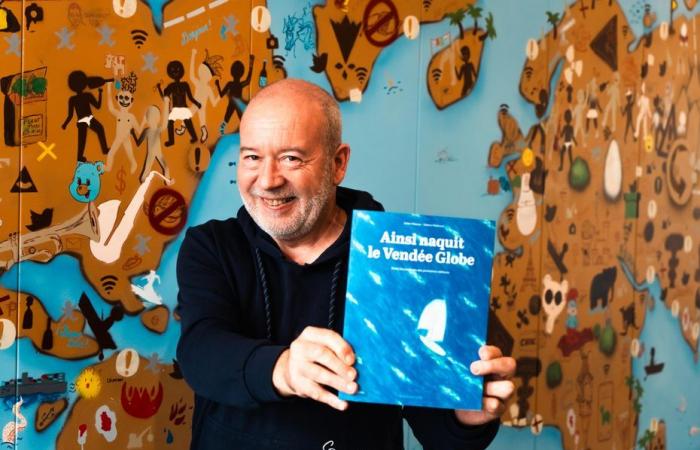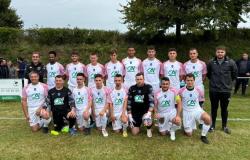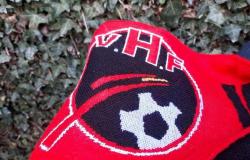
Lovers of the Vendée, like sailing enthusiasts, those who would not miss this unique race in the world for anything can now delve into this book which goes behind the scenes of the creation, 35 years ago, of the Vendée Globe .
The essentials of the day: our exclusive selection
Every day, our editorial team reserves the best regional news for you. A selection just for you, to stay in touch with your regions.
France Télévisions uses your email address to send you the newsletter “The essentials of the day: our exclusive selection”. You can unsubscribe at any time via the link at the bottom of this newsletter. Our privacy policy
This is a book that makes a new beginning. Which reappears a few weeks before the event it celebrates: the now legendary “Everest of the seas”
Written during the first confinement, “Thus was born the Vendée Globe” began to be broadcast on the occasion of the last edition of the Vendée Globe, in October 2020.
“I remember, we were signing the book at the stand of the tourist office in Les Sables d’Olonne, when a voice rang out over the loudspeakers telling us that the government was reconfining the population. The village of Vendée Globe was immediately emptied and closed. and any hope of selling the book, in this context, vanished, recalls Fabrice Hodecent, its author.
But ultimately, nothing prevented it from being republished, because this book is timeless, the only work published to date which focuses not on the skippers or their boats, but on the initial organization of the first two editions of the race. , in 1989 and 1992.
“I met Didier Planson, who at the time was director of the Sport-Océan institute and the youth and sports center in the town of Les Sables d’Olonne. He is the man in the shadows, a real sailman who organized everything and took care of all the logistics. He worked at the town hall of Les Sables and had kept incredible documents, faxes, telexes, photos from those years… 1 m³ of intact documents. says Fabrice.
“Didier’s idea was, as he said, to put the church back in the middle of the village and in particular to make it known that it is indeed the town of Les Sables and not the department which is at the origin of this adventure”.
View of the village of the first Vendée Globe in 1989
•
© DR-Editions Rouquemoute
Fabrice Hodecent then immerses himself in the archive boxes, in the bowels of the race.
Although he discovered the Vendée Globe as a teenager, in front of his TV, following the Thalassa broadcasts on FR3, Fabrice could not imagine what led to his birth.
The idea of a race around the world solo, non-stop, and without assistance was born in 1987.
It was initiated by Philippe Jeantot, a communications ace and skipper himself, who chose Les Sables as his home port, after winning the BOC Challenge, ancestor of the Vendée Globe, twice in a row.
Philippe Jeantot during a radio session during the second Vendée Globe
•
© Gérard Beauvais/VSO
A new challenge to take on, launched as a challenge from one browser to other browsers!
Thirteen skippers took up the gauntlet and signed up for the first year. There are no plans for a second edition of this event, initially called “Vendée Globe Challenge Les Sables-Les Sables”.
A collector’s image: the thirteen skippers of the first Vendée Globe… it’s up to you to find their names!
•
© Editions Rouquemoute
“In Sables-d’Olonne, without realizing what it was going to become, everyone said banco. However, the city of Les Sables was not known for competitive sailing. It was above all a fishing and commercial port compared to La Rochelle or Lorient. This is surely what stimulated everyone to get involved!”
All over the city, small groups of volunteers are forming, taking care of logistics, communication and welcoming boats. “You have to see that it was totally improvised, tinkered… and that it worked, thanks to the energy deployed by dozens of little hands. It is to these people that I wanted to pay tribute, to preserve the memory of all these people behind the scenes who contributed to making this sailing race an internationally renowned event.”
Home of the race’s general police station… The “Globettes” and the corded telephone.
•
© DR/VSO-Editions Rouquemoute
In 1989, at the time of the race, a village was created, which brought together all the teams and where volunteers and skippers mixed indiscriminately, the atmosphere had little to do with that which reigns today.
This is surely one of the key elements which, from its beginnings in the Vendée Globe, allowed it to gain its popularity. “A village with free entry has never been seen before on maritime races. And in fact, it’s still the case,” specifies Fabrice Hodecent.
The event attracts 400 to 500,000 people. A totally unexpected success. “At the time, the benchmark was Madonna who had given a concert in front of 130,000 people! It was the maximum capacity known. There, to accommodate this crowd, we had to invent, all the devices, on earth, at sea, in the air.”
The pontoons seen from the sky in 1992.
•
© Gérard Beauvais/VSO
Not to mention that this new race makes the Vendée known and recognized throughout France.
“Until then, the Vendée was considered a country of dirtbags and dirtbags. We vaguely knew the Vendée as a vacation destination, recalls the author. There were two Vendées, that of the land, that of the sea. The Vendée Globe brought together these two identities and brought pride to all Vendée residents.”
“All the criticism, mainly coming from the Parisian press, which predicted the worst, was a stimulus and a driving force for the volunteers. In any case, that’s what the witnesses I interviewed told me! relate Fabrice Hodecent.
Thanks to dozens of documents, unpublished photos, testimonies and anecdotes, Fabrice Hodecent, former journalist, brings to the surface with “Thus the Vendée Globe was born” a whole part of the local history of Les Sables d’Olonne. An intangible and human heritage that until now no one had paid attention to.
Price: 25 euros
Find us on our social networks and on france.tv





